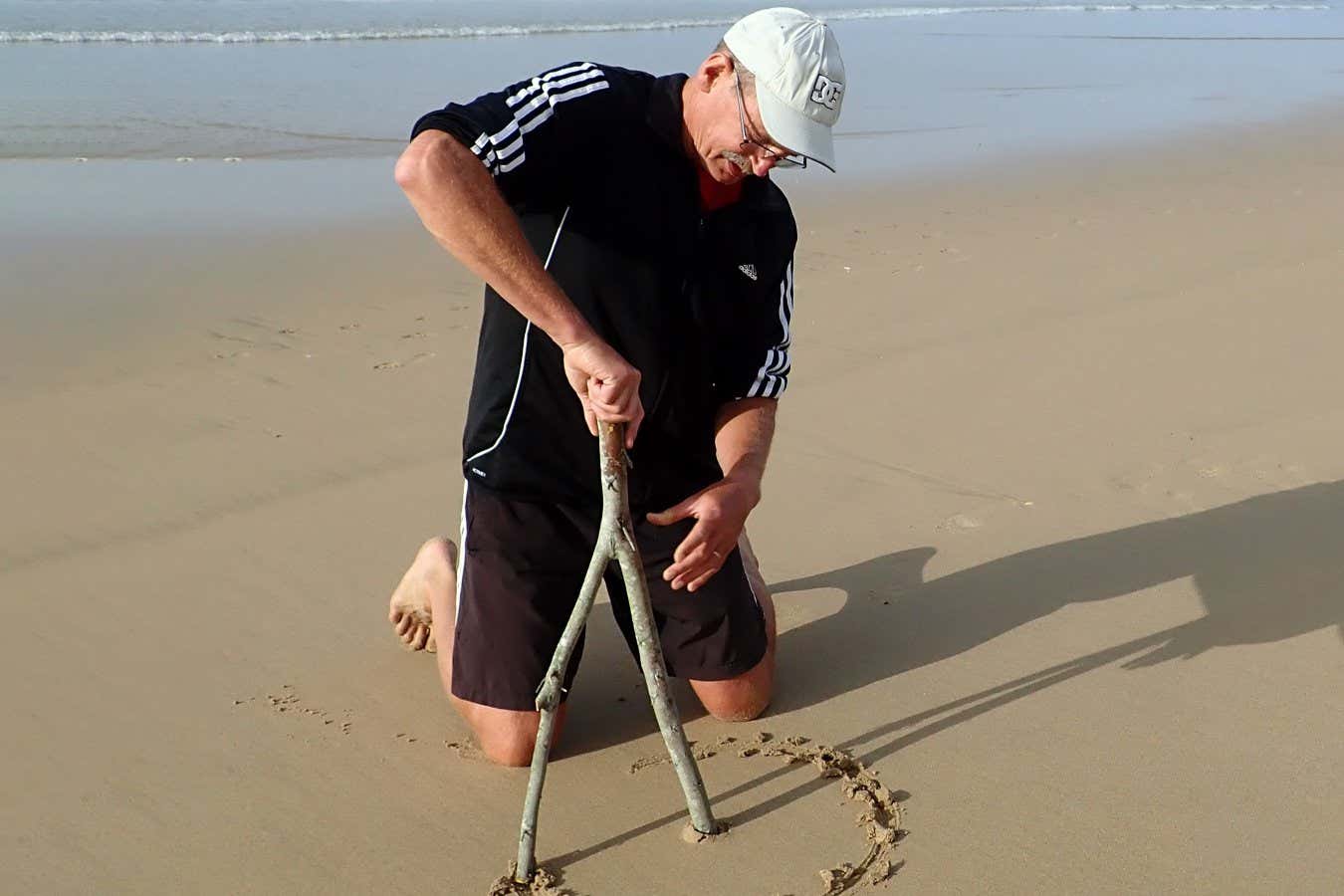Using a forked stick and sand, Charles Helm from the African Centre for Coastal Palaeoscience in Gqeberha demonstrated how one can etch a perfect circle on a South African beach. This simple act of drawing in the sand is an age-old human impulse that dates back at least 136,000 years.
In 2018, Helm discovered a perfectly carved circle with a central depression on a slab of sandstone in the Garden Route National Park. This region is known for its traces of early Homo sapiens, including rock art and the oldest footprint ever found, which dates back approximately 150,000 years.
The slab that Helm discovered was once the surface of a coastal sand flat that has since solidified into rock. He also found other patterns on the same outcrop, such as grooves, cross-hatches, parallel lines, and a perfect triangle. Helm ruled out natural causes for these patterns and concluded that they were intentionally made by people. However, he believes they likely didn’t hold much significance and suggests that they were probably made by children playing around.
Helm proposes that these sand drawings should be classified as a fifth type of palaeoart, after cave paintings (pictographs), rock engravings (petroglyphs), images carved on trees (dendroglyphs), and arrangements of rocks or earth (geoglyphs). He suggests naming them “ammoglyphs,” derived from the Greek word “ammos” meaning sand.
Insights
- Discovering ancient sand drawings sheds light on the cultural practices of our ancestors over 100,000 years ago.
- The existence of these sand drawings supports the idea that humans have always had a creative impulse and an innate desire to make art.
- The classification of sand drawings as a distinct type of palaeoart highlights the diversity and complexity of human artistic expression throughout history.
- The name “ammoglyphs” not only distinguishes sand drawings but also pays homage to the Greek origins of the word “sand.”







